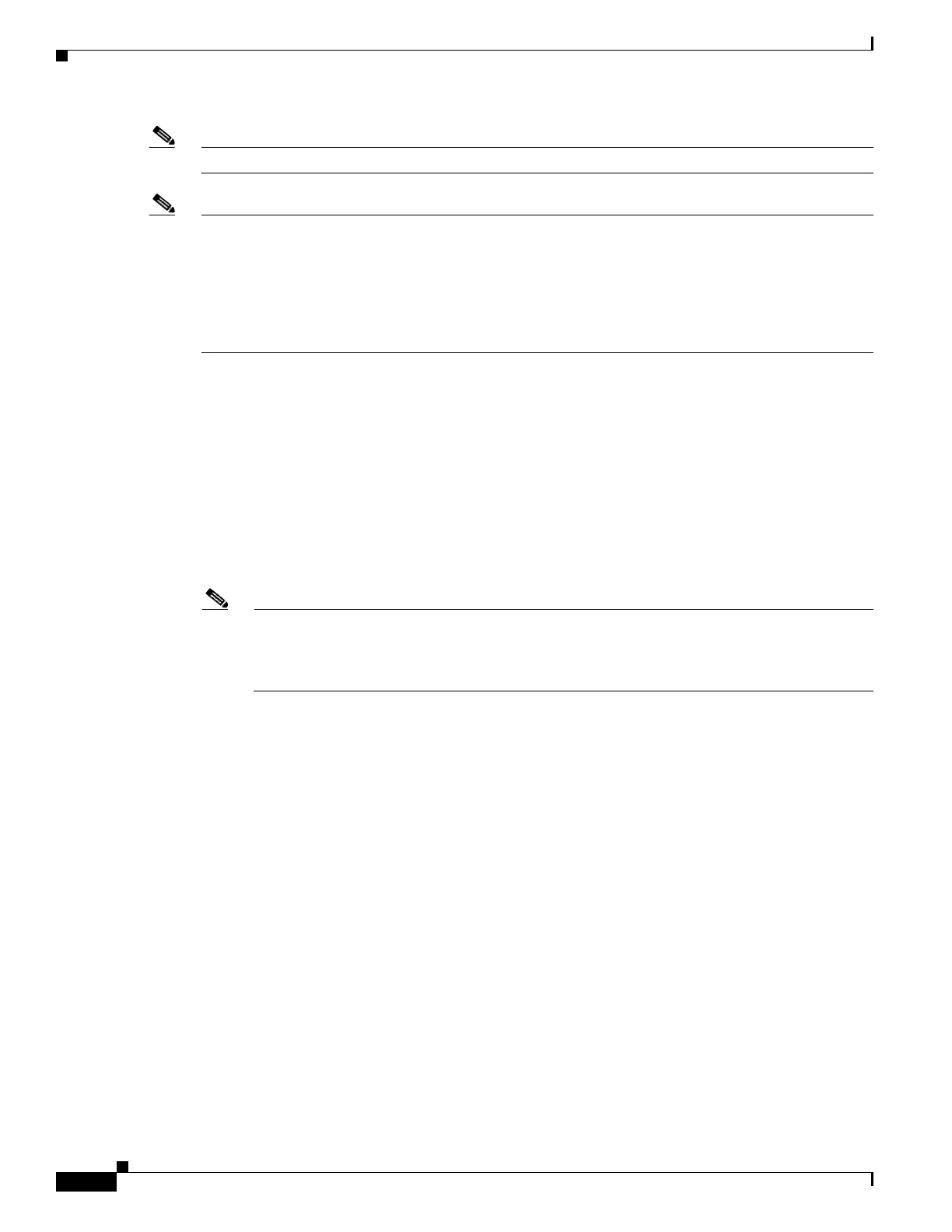9-2
Cisco ONS 15454 DWDM Reference Manual, R8.5
78-18343-02
Chapter 9 Node Reference
9.1.1 Hub Node
Note The Cisco TransportPlanner tool creates a plan for amplifier placement and proper node equipment.
Note To support multiple optical sides in mesh DWDM networks, east and west are no longer used to reference
the left and right sides of the ONS 15454 shelf. If a network running a previous software release is
upgraded to this release, west will be mapped to A and east to B. In two-sided nodes, such as a hub or
ROADM node, Side A refers to Slots 1 through 6 and Side B refers to Slots 12 through 17. Terminal
nodes have one side labeled “A,” regardless of which slots have cards installed. For more information
about configuring the ONS 15454 in mesh DWDM networks, see the “9.4 Configuring Mesh DWDM
Networks” section on page 9-30.
9.1.1 Hub Node
A hub node is a single ONS 15454 node equipped with two TCC2/TCC2P cards and one of the following
combinations:
• Two 32MUX-O cards and two 32DMX-O or 32DMX cards
• Two 32WSS cards and two 32DMX or 32DMX-O cards
• Two 32WSS-L cards and two 32DMX-L cards
• Two 40-WSS-C or 40-WSS-CE cards and two 40-DMX-C or 40DMX-CE cards
Note The 32WSS/32WSS-L/40-WSS-C/40-WSS-CE and 32DMX/32DMX-L/40-DMX-C/
40-DMX-CE cards are normally installed in ROADM nodes, but they can also be installed in hub
and terminal nodes. If the cards are installed in a hub node, the 32WSS/32WSS-L/
40-WSS-C/40-WSS-CE express ports (EXP RX and EXP TX) are not cabled.
A dispersion compensation unit (DCU) can also be added, if necessary. Figure 9-1 shows a hub node
configuration with 32MUX-O and 32DMX-O cards installed.

